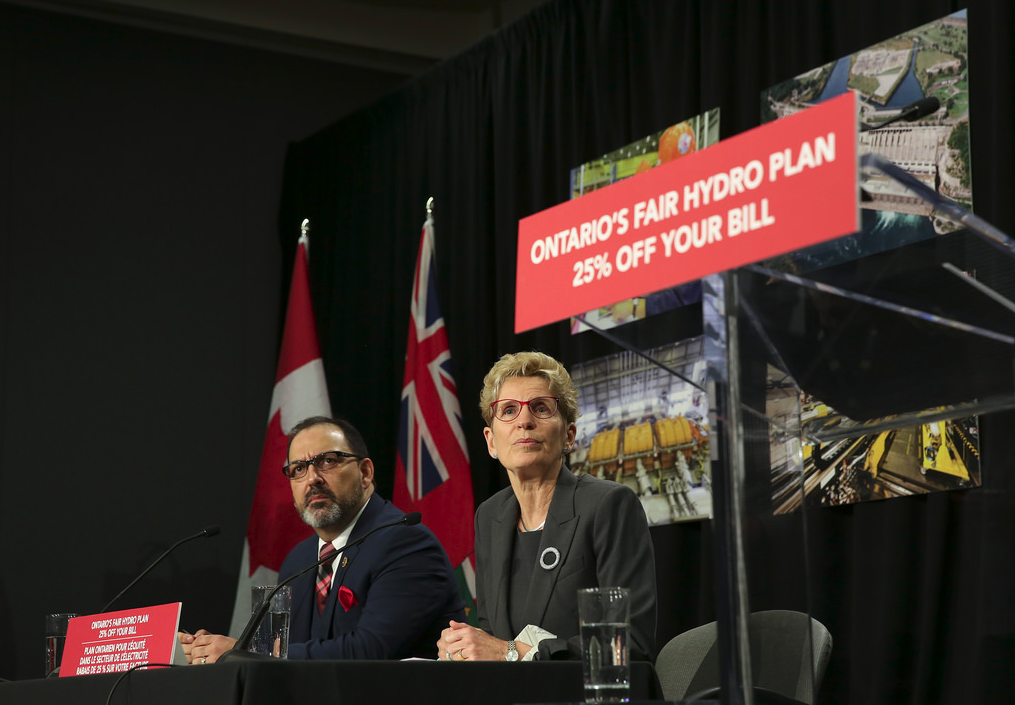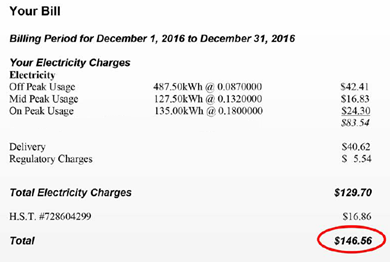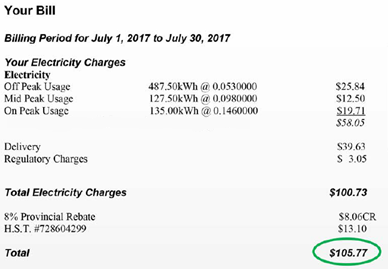|
Yesterday the government of Ontario released the details of their Fair Hydro Plan. The plan is intended to result in a 25% reduction on the average residential electricity customer’s bill and, barring any unforeseen delays, should be in place by the summer of 2017 (likely May). This 25% reduction will be coming from different areas:
|
Policy Rationale for the Plan
And now to the components of the plan and potential impacts.
Refinancing the Global Adjustment
The full cost of GA would continue to be paid to generators (nuclear, natural gas, waterpower, wind, solar, bioenergy) and to fund conservation programs (which satisfies the government’s contractual obligations to these parties) but will be funded, in part, by debt rather than from ratepayers, at least for now. The annual $2.5 billion difference will be transferred to an account managed by Ontario Power Generation (OPG) where it will accumulate interest and be paid off over a longer period of time (30 years). This change will result in an immediate reduction on electricity bills by reducing the GA component of the cost of electricity. The government has also announced that they will be holding any increases to electricity rates to the rate of inflation over the next 4 years.
The Impact to Solar Net Metering: Refinancing the GA will directly reduce the per kWh charge that electricity customers pay, which will change the price that companies will need to offer a potential net metering customer. For example, if a customer was currently paying 15¢/kWh for grid electricity, a net metering company might need to offer a solar kWh for 13-14¢ in order for the customer to be interested. With the refinancing of the GA, the price per kWh of grid electricity will decrease and the net metering company would need, in turn, reduce the cost of a solar kWh in order to incent uptake. This will increase payback periods by widening the gap between the cost of a kWh from the grid and the required price per kWh that a net metering system would need in order to cover costs and still produce electricity cost savings for the customer.
We do not yet know the exact impacts to the per kWh price in Ontario and so cannot yet quantify the exact impact to net metering system economics. Once greater clarity on the impact to Time of Use (TOU) and Tiered Rates is available, CanSIA will share that information with Members. For the time being, below are some potential impacts in the form of changes to mock bills for standard service residential electricity customers.
Broadening the Rural or Remote Electricity Rate Protection (RRRP)
The Impact to Solar Net Metering: This change is expected to have a relatively minor impact on solar net metering as the addition to the regulatory charge on current bills is small and the effect will only impact residential distribution charges. As described previously by CanSIA, the Ontario Energy Board (OEB) is going through the process of fixing residential distribution charges, thus solar net metering cannot affect these charges regardless.
Enhancing the Ontario Electricity Support Program, First Nations On-Reserve Delivery Credit, and Establishing a New Affordability Fund
The Impact to Solar Net Metering: CanSIA expects the impact to solar net metering from these three measures to be relatively minor given that they generally target either portions of the bill that cannot be impacted by a net metering system, and because they target customer classes that would not likely pursue solar at this time.




 RSS Feed
RSS Feed

